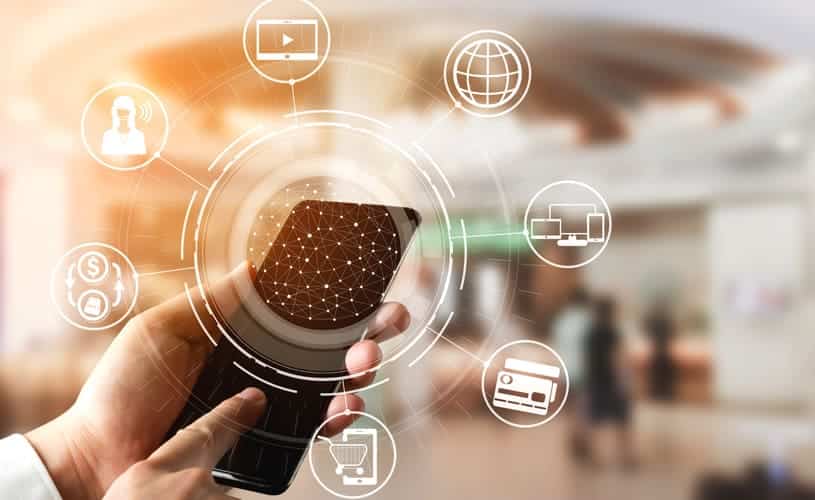Boosting CX Through IoT and Edge Computing
Traci Curran
November 21, 2022

While not a new concept, edge computing is gaining steam, with more businesses embracing this technology at a breakneck pace. A recent Gartner report found that in 2022 alone, enterprises will create and process over 50% of the data they generate at the edge, outside the traditional data center or cloud infrastructure. This number will only continue to climb over the next few years.
With a surge in edge computing comes a revolution in the way businesses collect, process and store data. This revolution will open new doors to improvements in customer experience (CX) and transform the way businesses and customers interact in the future.
Working at the edge will introduce new challenges for businesses, especially as the devices that operate at the edge continue to grow in scale and complexity. Common issues include security concerns and understanding how to use edge data to connect with users in a non-intrusive way.
Edge Computing 101
To effectively drive business results through edge computing, we first need to conceptually understand what it is and how it fits into an enterprise. Edge computing refers to the distributed framework that seeks to put applications as close to data sources as possible. These sources can include internet of things (IoT) devices such as smart watches, robotics, warehouse sensors, and more.
The benefit for businesses leveraging edge computing is that they can process data near devices that generate data. Businesses can process locally generated data faster to get real-time insights and that helps them react quickly to changing conditions. The edge promises to deliver a more immersive and interactive CX. The amount of data these devices generate can be massive. Edge computing analytics allow businesses to sift through high volumes of data, keeping only what is useful.
Customers have more control and options over where and how they spend their money, especially in the online shopping environment where it’s easy to find options and compare prices. Edge computing gives brands the opportunity to instantly interact with customers across multiple channels to provide highly personalized experiences that encourage purchases.
Real-time data collection allows companies to dynamically adjust promotions, providing the right offers to the right customers – at the right time. For example, sensors within a clothing store can detect where a shopper is located, tie in historical shopping data about them, and then suggest deals on items that shoppers may be interested in buying. This real-time CX is hyper-personal to an audience of one and establishes a relevant shopping experience for the customer.
The power of the edge, though able to provide tangible benefits to organizations looking to improve CX, comes with its share of complexities.
Challenges at the Edge
Securing data at the edge and data sourced through IoT devices is a major challenge. As businesses increase the number of IoT devices used to generate and collect customer data, their attack surface area grows. Each new device, be it a sensor, smart thermostat, or connected speaker, opens new doors for cyberattacks.
The tricky part is ensuring the security of each device, as it often lacks the computational capacity for built-in security. In addition, edge devices are often misconfigured or are left with default configurations that are not secure. Threat actors can exploit security vulnerabilities to spread malware and steal data.
When it comes to creating a better CX through edge and IoT, businesses need to carefully toe the line between being helpful and being overbearing. For example, a grocery store leveraging sensors and a connected shopping cart may be able to deliver special sales to shoppers in the store but run the risk of bombarding them with too many notifications. This can come off as intrusive and leave customers feeling as though they’re being followed. When done properly, however, it can yield remarkable results and create experiences that keep customers coming back for more.
CX at the Edge
Given the ever-present nature of IoT devices and their continued adoption in the enterprise, there are opportunities at the edge to elevate CX strategies to their next level. Operating at the edge helps businesses democratize and curate experiences, as it cuts down barriers between customers and the brands they interact with. Being more functional at the edge and operating closer to customers means that the experience they receive is the one that is best suited to them.
Additionally, given the expansion of 5G networks and innovations in Wi-Fi technology, edge computing latency is dramatically dropping, enabling brands to deliver experiences to end-users even quicker. The edge gives IoT applications a localized basis for processing and storing data, which businesses can analyze through a local network. With latency reduction, experience optimization can happen even faster.
At the edge, brands can generate data that builds real-time insights that improve and enhance the CX and improve business intelligence in data stored in the cloud.
Want to learn how edge data management for IoT and mobile can help your organization modernize its edge application data processing and analytics? Go to the Actian website for more information.
Subscribe to the Actian Blog
Subscribe to Actian’s blog to get data insights delivered right to you.
- Stay in the know – Get the latest in data analytics pushed directly to your inbox
- Never miss a post – You’ll receive automatic email updates to let you know when new posts are live
- It’s all up to you – Change your delivery preferences to suit your needs
